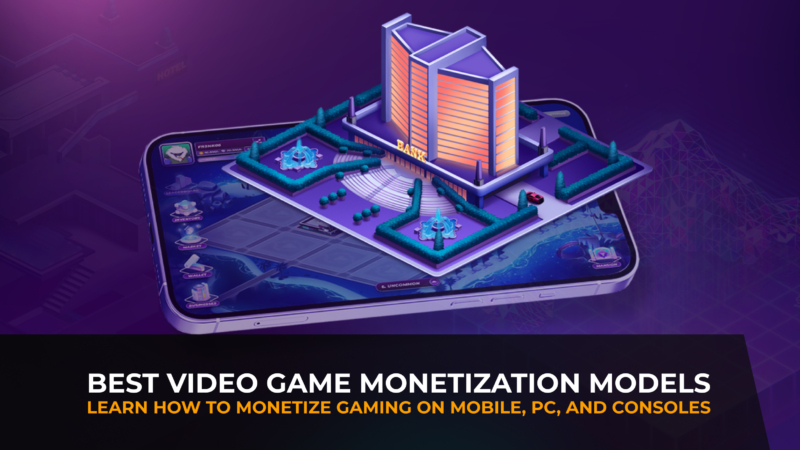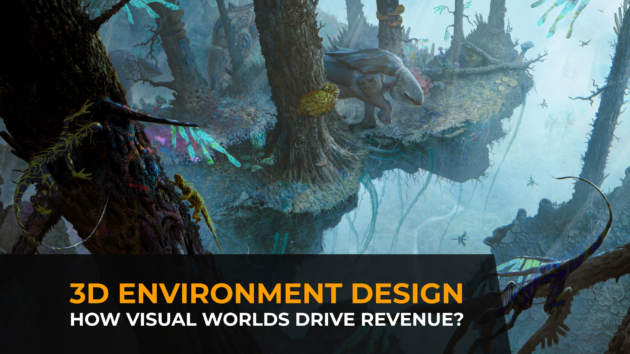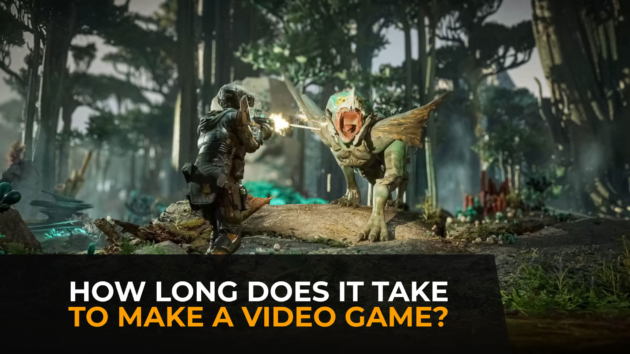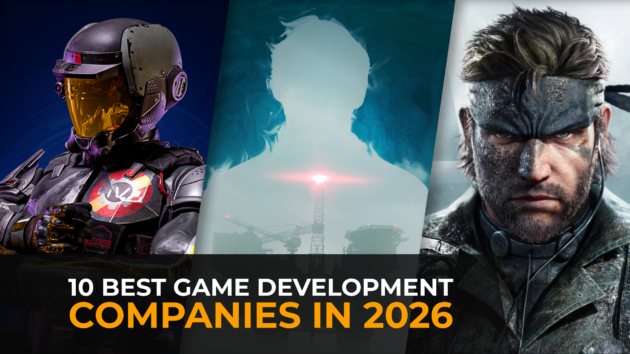In the dynamic gaming landscape, monetization has become crucial for game owners and publishers seeking to maximize their revenue streams. However, as competition to capture and retain players’ attention intensifies, implementing effective monetization strategies is becoming increasingly challenging.
This article delves into the importance of monetizing games properly and explores the top monetization models, including various ad types, to help you unlock your gaming venture’s full profit potential.
Key Reasons to Monetize Games
Monetization isn’t just a means for companies to recoup development costs. A well-defined monetization strategy allows you to:
- Gain a sustainable revenue stream. Game development is a resource-intensive process that involves significant investments in time, talent, and technology. Monetizing your game ensures a steady revenue stream, enabling you to earn back your initial investment, fund ongoing development, and reinvest in new projects.
- Enhance player engagement and retention. Well-implemented monetization strategies can enhance player engagement by offering optional in-game purchases, such as power-ups, cosmetic items, or time-saving boosts. These additional features not only generate income but also contribute to a more immersive and rewarding gaming experience, fostering player loyalty and retention.
- Fuel ongoing support. Monetization provides resources for continuous bug fixes and fresh content updates, which helps nurture a vibrant community. This keeps players hooked and extends the game’s lifespan.
- Foster innovation. The funds you’ve returned through monetization can empower you to push further in implementing innovative gaming ideas, potentially leading to other groundbreaking titles in the future.
The Wide Variety Video Game Monetization Models
When it comes to monetization, there isn’t a one-size-fits-all approach. The optimal strategy will always depend on your game’s genre, target audience, and platform. Here are some popular models to consider:
In-Game Advertising Model
Free-to-play games can integrate non-intrusive ads to generate revenue. This means players can choose to watch an ad in exchange for in-game rewards like virtual currency or power-ups. For instance, Choices: Stories You Play entices gamers with a complimentary experience of interactive storytelling. However, to significantly influence the plot or gain romantic advantages, players encounter “premium choices” that necessitate diamonds, the game’s premium currency. Choices provides multiple methods to acquire diamonds, including direct purchase or by watching ads—a feature catering to users who prefer not to spend money.
Another great example of this model at play is Stepico’s Century Siege. This title also cleverly caters to both free-to-play and paying audiences. It offers a core gameplay experience that’s completely free to enjoy but enables players to make strategic in-app purchases to accelerate their progress or access exclusive content. These purchases include premium currency for special offers and a subscription service granting unique rewards and passive income. Century Siege avoids intrusive advertising. Instead, it utilizes a rewarded ad system, offering players the option to watch ads in exchange for benefits like doubled rewards, additional chests, or even swapping their daily quests. This player-friendly approach keeps the core gameplay enjoyable for everyone while providing optional opportunities for those who want them.
Freemium Game Monetization Strategy
Here, players also download the game for free and enjoy core gameplay but additional content, cosmetic upgrades, or power-ups can be purchased through in-app purchases (IAPs). This model is widespread in the mobile market, but also extends to PC and console games with online components. The famous Candy Crush Saga reels players by offering the core game for free, which lets a vast audience experience the addictive match-3 gameplay. However, for those who crave a little extra help conquering tricky levels, Candy Crush provides optional in-app purchases. Players can spend real money on gold bars, the game’s premium currency, to buy additional lives, boosters, power-ups, and extra moves.
Another good example is Stepico’s Fishing Rival. Players can enjoy the base fishing experience at no cost, but have the option to accelerate their progress and unlock new content faster through in-app purchases. These purchases use “cash,” the title’s currency, to buy special offers and most in-game content.
Premium Model
Players pay a one-time upfront fee to download and access the full game. This model is often used for console and PC titles but can also be successful for high-quality mobile games. God of War 2 is a bright example of premium model implementation, relying solely on upfront purchases to generate revenue. Aside from publishers, this approach benefits players. They get a complete experience with the freedom to replay the game and explore its challenges without being bombarded with extra purchase offerings. This model thrives on delivering a quality product that justifies the initial investment.
Hollow Knight, the hauntingly beautiful Metroidvania by Team Cherry, exemplifies another proper execution of this approach. For a fixed price, players are granted access to the entirety of the sprawling, interconnected world of Hallownest. Hollow Knight is famous for its rich lore that unfolds organically through exploration and cryptic storytelling, elements that wouldn’t impress that much if they were fragmented for monetization. The focus on a dense world filled with challenging boss battles and secrets to uncover incentivizes players to delve deep and replay the game, extracting maximum value from their initial purchase. This approach proves that the premium model can be a perfect choice for publishers if they decide to deliver a self-contained, high-quality experience that keeps players engaged without the need for additional in-app purchases.
Subscription Model
A subscription in the gaming world typically entails paying a recurring fee for access to exclusive content, features, or benefits. This model is great for games with a focus on ongoing play and frequent content updates. Xbox Game Pass has emerged as one of the key players in this area.
For a monthly fee, it enables gamers to unlock a variety of downloadable titles, eliminating the need to buy each one individually. Acting as a sort of “Netflix for games,” this library boasts hundreds of options, catering to various tastes with a mix of blockbuster AAA releases, indie gems, and even day-one access to Microsoft’s own first-party titles. It is constantly evolving too, with new additions arriving frequently and some content rotating out to keep things fresh.
Xbox Game Pass maximizes this monetization approach by appealing to different player preferences with multiple subscription tiers. Console gamers can access the library on their Xbox devices, while PC players have their own optimized library. The ultimate tier, Xbox Game Pass Ultimate, combines both console and PC libraries, throws in cloud gaming functionality for on-the-go access, and sweetens the deal with exclusive discounts and early access trials.
Finding the Perfect Way to Monetize Your Game Through In-Game Advertising
If you choose to go for the advertisement model, which has been picking up a lot of steam lately, it’s crucial that you select ad formats that enhance the player experience rather than disrupt it. Here are some common ad types to consider:
- Banner ads. These non-intrusive rectangular ads appear at the top or bottom of the game screen, offering minimal disruption.
- Interstitial ads. These full-screen ads appear between levels or game sessions. To avoid frustration, keep them short and offer a clear “close ad” option.
- Rewarded video ads. Players voluntarily watch a short video ad in exchange for in-game rewards. This incentivized format fosters a positive association with advertising.
What Is the Best Type of Game Monetization Strategy for Particular Platforms?
The key to unlocking your game’s full revenue potential lies in experimentation and data-driven decision-making. If you’re working with a custom game development vendor, they’ll assist you in strategy selection by analyzing player behavior and A/B testing different monetization types to fine-tune your approach and maximize profitability. The approach will heavily depend on the platform and your project requirements. Here are some general recommendations as which which models can be a good fit for different platforms from Stepico’s experts.
Mobile Games
- Freemium. Freemium mobile gaming removes barriers with a free download, offering players a risk-free trial and enticing them with well-designed limitations that encourage upgrades and cater to shorter mobile play sessions.
- Advertising model. This free-to-play model also broadens game reach on discoverability-focused platforms, offering players an enjoyable experience with nonintrusive targeted mobile ads. This leads to increased ad impressions and revenue from tailored advertising without requiring direct in-game spending.
Web Games
- Freemium with strategic IAPs. The web freemium model allows for a deeper base game experience with IAPs focused on customization, storylines, and world expansion to cater to web gamers with more playtime compared to mobile audiences.
- Subscription. Web games, unlike many mobile games, at times can leverage subscriptions to target dedicated players with exclusive content, early access, and ad-free experiences, creating a premium tier for their favorite web games.
- Targeted in-game advertising with less intrusion. Web games offer large screens for non-intrusive ads, rich user data for targeting, and natural ad placements that don’t disrupt gameplay – all leading to more revenue for publishers and a smoother experience for the player.
PC Games
- Premium model. The premium model thrives on PC due to player expectations for complete, well-crafted experiences. With upfront payments, publishers can focus on quality, providing uninterrupted gameplay. Additionally, the diverse PC gaming audience allows for premium pricing catering to different preferences, while additional content sales, such as new levels or cosmetic items, align with the PC modding scene, extending the game’s lifespan.
Console Games
- Subscription. Although by no means the only choice, the subscription model can be extremely beneficial for console games. It gives publishers an additional recurring revenue stream – a predictable income source based on subscriber count. Additionally, subscriptions can expand the player base. By offering access to a library of games for a monthly fee, publishers can attract casual gamers who might not be willing to invest in individual titles. This broader audience reach can lead to increased revenue not just through subscriptions, but also through potential additional content purchases or in-game marketplaces within the subscription service.
It’s also worth noting that, similar to the PC titles, some console games can only be acquired through a one-time purchase. This is especially true for new and trending titles from renowned publishers, who can later still add them to the subscription to generate more revenue. Smaller studios with limited marketing budgets, however, tend to offer their games on subscription services from the get-go.
How to Implement Gaming Monetization Correctly
Crafting a winning monetization approach is more than just picking a model. At our video game development studio, we rely on these principles when developing a comprehensive strategy:
- Know your audience. Understanding your target player’s demographics and spending habits is crucial.
- Define your value proposition. Clearly articulate what value players receive from spending money in your game.
- Balance is key. Don’t disrupt the core gameplay with excessive monetization. Players should feel like they’re getting a complete and enjoyable experience without being pressured to spend.
- Data-driven decisions. Regularly analyze player behavior and revenue streams. Use this data to optimize your monetization strategy and ensure it’s aligned with player preferences.
And here are some common monetization missteps you should avoid.
- Pay-to-Win (P2W). This strategy prioritizes players who spend the most money, creating an unfair advantage and frustrating free-to-play users. This can alienate a large portion of your player base.
- Excessive ads. Bombarding players with constant ad breaks disrupts the gameplay flow and creates resentment.
- Unbalanced economy. If the in-game resources or rewards are heavily skewed towards in-app purchases, free-to-play users will feel like they’re constantly grinding with little progress. This discourages players from sticking around.
- Lack of transparency. Confusing pricing structures or misleading descriptions of in-app purchases can erode player trust.
- Ignoring analytics. Failing to track player behavior and in-app purchase trends can prevent you from identifying and fixing problems within your monetization strategy.
Partnering with a seasoned game development vendor such as Stepico can provide valuable guidance and help avoid these and other monetization pitfalls.
We don’t just integrate efficient monetization models – we create them with your game’s DNA in mind.
Over the last 9 years, Stepico has successfully implemented a wide range of monetization models, from freemium with IAPs for mobile games to premium experiences with cosmetic microtransactions for consoles. If you want to transform your game idea into an engaging experience that generates serious revenue, contact us now to get 5-star game development services, ensuring your game is visually stunning and engaging, along with expert integration of monetization models.




